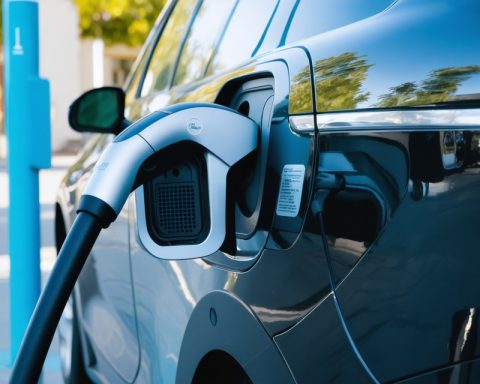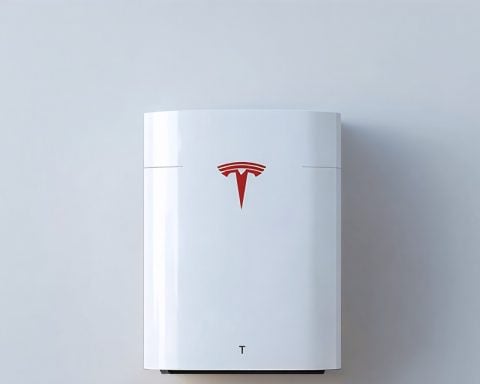Revolutionary Technology in the Heart of Michigan
In a groundbreaking initiative, the state of Michigan has teamed up with Electreon, an Israeli company specializing in wireless electric vehicle (EV) charging, and Xos, Inc., a California-based manufacturer of commercial electric vehicles. This collaboration aims to set up innovative wireless charging stations tailored for commercial EVs across Michigan.
With this partnership, Electreon’s cutting-edge wireless charging technology will be integrated into Xos’s Stepvan model. This pioneering effort is designed to showcase how wireless charging can significantly reduce the overall costs associated with transitioning commercial truck fleets to electric power.
Moreover, the project plans to introduce stationary wireless charging setups at a UPS facility located in Detroit. This installation will facilitate cable-free overnight charging, perfectly catering to the busy operations of the depot.
In a recent discussion, Kathryn Snorrason, the Vice President and Associate Chief Mobility Officer for the Michigan Economic Development Corporation, elaborated on this historic program. She highlighted the state’s commitment to expanding this revolutionary wireless charging technology, promising to collaborate with various partners throughout Michigan.
This partnership not only represents a significant leap forward in the electrification of transportation but also positions Michigan as a leader in sustainable mobility solutions. The future of EV charging is here, and Michigan is paving the way.
Michigan Revolutionizes Electric Vehicle Charging with Groundbreaking Wireless Technology
Introduction
Michigan is making waves in the EV industry with its innovative partnership featuring Electreon and Xos, Inc. This collaboration represents a pioneering effort to integrate wireless electric vehicle (EV) charging technology into commercial logistics, showcasing the state’s commitment to sustainable transportation.
Features of the Wireless Charging Technology
Electreon’s wireless charging technology enables electric vehicles to charge while driving, as well as while stationary. This approach eliminates the constraints of traditional plug-in charging infrastructure. Some notable features of this technology include:
– Efficiency: Wireless charging systems are designed to be efficient, minimizing energy loss during the transfer from pavement to vehicle.
– Integration with Fleet Management Systems: The technology can be integrated into existing fleet management systems, optimizing route planning and charging schedules.
– User-Friendly Operation: Fleet operators can enjoy a seamless experience, facilitating easier vehicle turnover and use without the need for manual charging processes.
Use Cases for Commercial Vehicles
The collaboration between Electreon and Xos primarily focuses on commercial vehicles, particularly Xos’s Stepvan model, which is used extensively for deliveries:
– Logistics and Delivery Services: Companies using delivery vans can leverage overnight wireless charging at depots, enhancing operational efficiency.
– Public Transportation: Wireless charging technology may also be applied in the public transit sector, allowing buses to charge at specific stops.
Pros and Cons of Wireless EV Charging
Pros:
– Reduced Charging Infrastructure Costs: Lower investment in physical charging stations and cables.
– Increased Uptime for Vehicles: Vehicles can charge during operational hours without the need for lengthy stops.
– Scalability: The ability to easily scale charging capabilities according to demand.
Cons:
– High Initial Investment: The installation of wireless charging systems can be expensive.
– Infrastructure Limitations: Requirements for modifying existing roadways or facilities for installation.
– Operational Constraints: Limited charging while driving may affect vehicle range relative to traditional charging methods.
Market Trends and Predictions
The partnership marks a significant trend towards integrating advanced technologies in the EV charging sector. As electric vehicle adoption continues to rise, markets are expected to see a steady increase in wireless charging solutions:
– Projected Market Growth: The global EV charging market is projected to grow exponentially, reaching approximately USD 100 billion by 2025.
– Sustainability Focus: There is a strong emphasis on sustainability, encouraging more states to adopt similar technologies to support climate goals.
Security Aspects
The deployment of wireless charging systems also raises considerations regarding security:
– Data Protection: As with any connected technology, ensuring the data integrity of fleet management systems is crucial.
– Physical Security: Infrastructure must be protected against physical tampering or vandalism.
Conclusion
Michigan’s initiative to deploy wireless electric vehicle charging stations is not just an innovation in technology; it signifies a shift toward sustainable transportation solutions across the United States. As the implementation of these systems progresses, Michigan stands poised to lead in the transformation of the EV landscape, paving the way for other states to follow suit. For more information on this groundbreaking project and to stay updated on electric vehicle developments, visit Michigan.gov.













